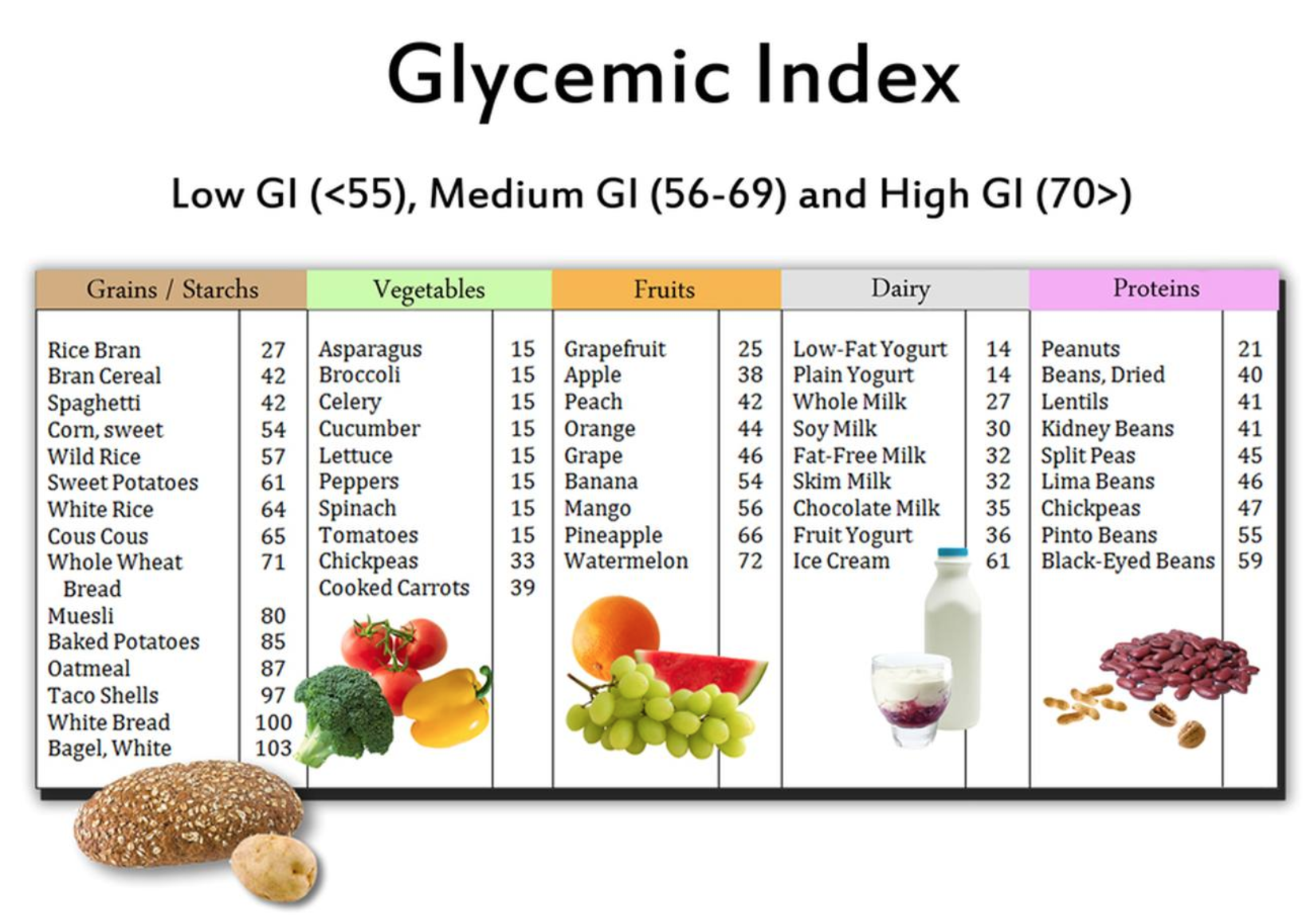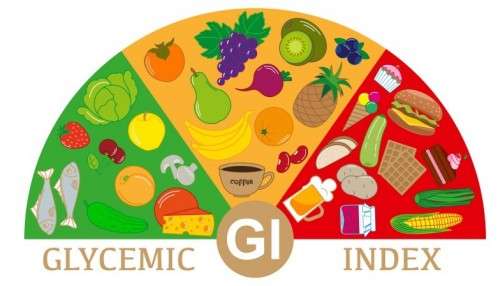October 1, 2018
[fusion_dropcap color=”#f6b331″ boxed=”no” boxed_radius=”8px” class=”” id=””]B[/fusion_dropcap]lood sugar instability is being recognized as one of the most profound and devastating influences on health and wellness.
Depression, anxiety, low energy, food cravings, disrupted sleep, weight gain, brain fog are among the many symptoms that may plague you if you unknowingly are struggling with daily blood sugar highs and lows.
Whether or not you are diagnosed with diabetes, the Glycemic Index (GI) and Glycemic Load (GL) are guides that can help you. They are measurements carried out on carbohydrate-containing foods and their impact on our blood sugar. They are tools used to determine which foods will create a greater spike in blood sugar levels.
The rise in blood sugar levels after eating carbohydrates (sweets, fruits and vegetables, bread, pastas and other starches are converted to sugar immediately upon digesting them) depends on two things:
- the rate of absorption of those sugars into the bloodstream
- the speed with which the sugar from these foods is removed from the blood and moved to the cells of the body
Insulin is what takes care of number two above. When there’s too much sugar in the blood, insulin picks it up and transports it to the cells of our bodies. Think of it like a shuttle bus for sugar.
This is super important to all of us, not just those diagnosed with diabetes, because having too high of sugar levels in the blood can be very harmful. Hyperglycemia, or high blood sugar, can damage the vessels that supply blood to our vital organs, which increases the risk of heart disease and stroke, kidney disease, vision problems, and nerve problems.
But unfortunately, there are limits to insulin’s magic powers. Sometimes it doesn’t work so well, like in the case of insulin-resistance, type II diabetes, or dysglycemia. Therefore, it’s crucial that we take care of number one above – the absorption of the sugars into our bloodstream in the first place.
The good news is that we can control the rate of absorption of sugars into the bloodstream!
Enter glycemic index and glycemic load.
There is a wealth of information available online, charts and lists to help one identify foods low or high in glycemic index. A GI of 55 or less is considered low, 56-69 is moderate, and 70 or more is high. Of course, it goes without saying we want to consume foods mostly that are low or moderate GI.
But without having to check a GI chart every time you eat something, here’s the general rule you need to know:
1. Avoid most all processed, packaged foods because they contain sugars that have a higher glycemic number and will cause a higher spike in blood sugar levels.
.
Real whole foods are naturally a better choice for controlling blood sugar, because they generally are void of the refined or processed sugars that contribute to significant spikes. Although some whole foods do in fact have a higher glycemic index number (like some fruits), they are also abundant in nutrients that are supportive not only to overall health, but often supportive to blood sugar balance as well. Fresh fruit and vegetables are super high in fibre, a nutrient that helps to slow the absorption of the sugars from these foods, thereby helping to balance blood sugars. Honey is another perfect example. Real honey, although a sugar, has only a low-moderate GI because it contains minerals that actually help to stabilize blood sugar, like chromium.
But what about those healthy foods that have a high glycemic index number, like pumpkin or pineapple? No, you DO NOT have to avoid these foods. In fact, please don’t!
Enter Glycemic Load.
Another way to slow the absorption rate of sugars from the foods we eat is by food-combining. Having a protein and/or healthy fat with any carbohydrate you eat will help to slow down the digestion of and therefore absorption of the sugars in the carbs. Here’s why:
Protein and fats are much slower to digest than carbs, therefore eating them together will help to slow down the digestion and absorption of the sugars from the carbs. This reduces the overall Glycemic Load.
It would not be advantageous to omit nutritious foods from your diet just because they have a high glycemic index. Instead, reduce the absorption of the sugars (aka the glycemic load) by slowing it down with clean protein or healthy fats. For example, a sweet potato has a higher glycemic index, meaning the sugar from it will be absorbed quickly in the body and can contribute to blood sugar instability. But combining that nutritious sweet potato with a lean cut of chicken and some coconut oil will slow the absorption, thereby reducing its overall glycemic load. Thus, you need not worry about the sweet potato and you get to enjoy this nutrient-dense, high fibre food!
2. Always consume a protein and/or healthy fat with any carbohydrate you eat.

Source: www.healthiack.com/health/glycemic-index-chart
Glycemic Index & Load Explained
The entire contents of this website are based upon the opinions of Build Holistic Nutrition. Please note that Build Nutrition is not a dietitian, physician, pharmacist or other licensed healthcare professional. The information on this website is NOT intended as medical advice, nor is it intended to replace the care of a qualified health care professional. This content is not intended to diagnose or treat any diseases. Always consult with your primary care physician or licensed healthcare provider for all diagnosis and treatment of any diseases or conditions, for medications or medical advice, as well as before changing your health care regimen.
© BUILD NUTRITION 2025. ALL RIGHTS RESERVED. PRIVACY POLICY
Go ahead, creep us on social. You know you want to!

